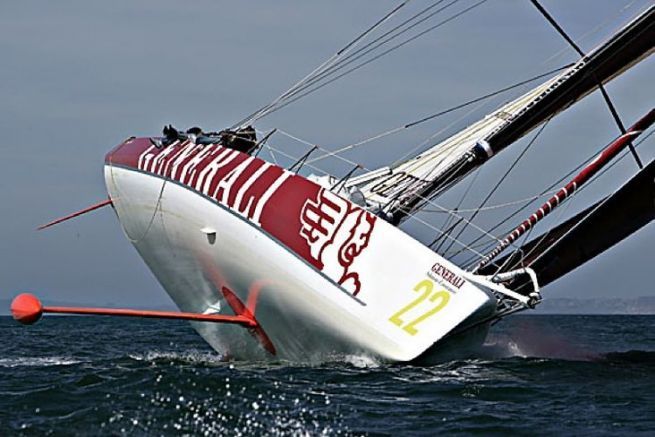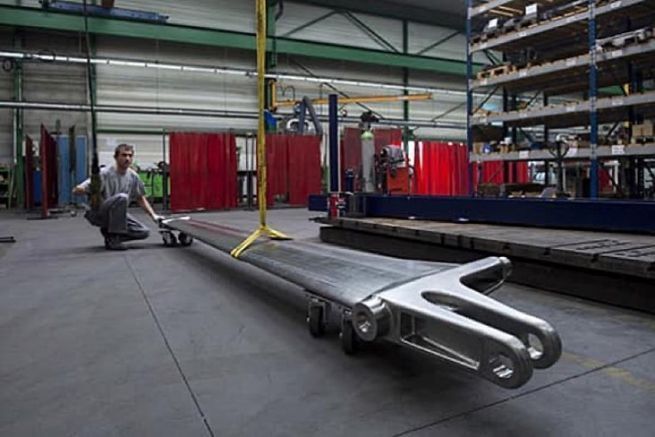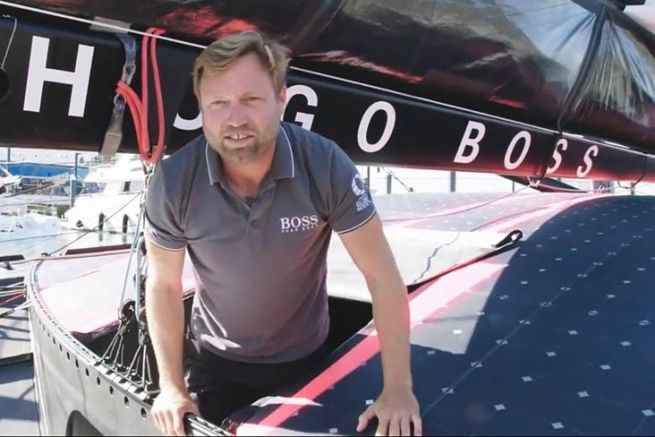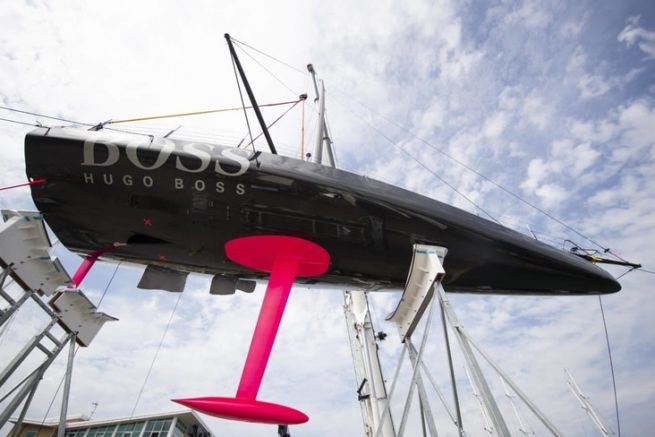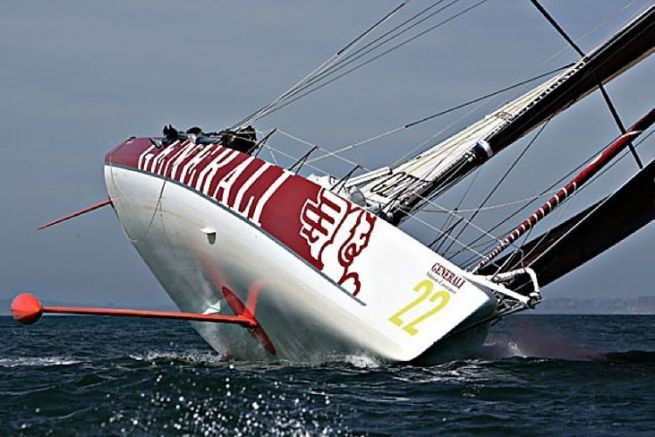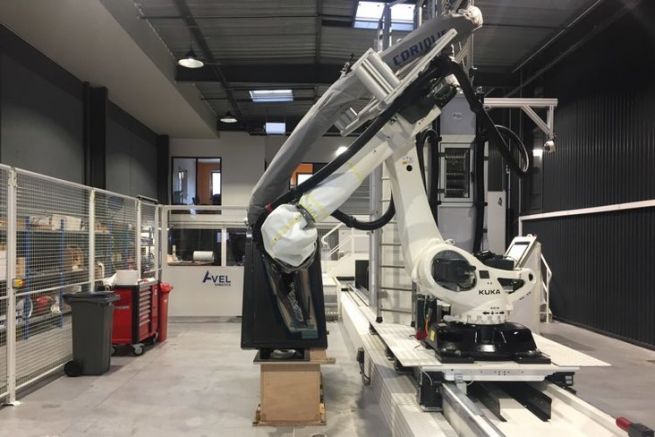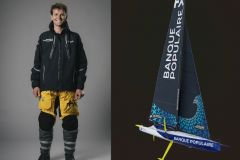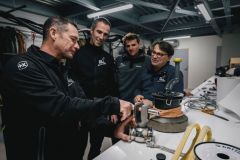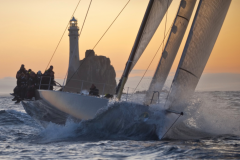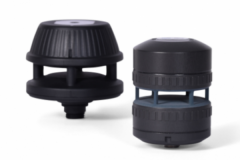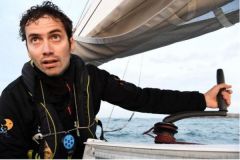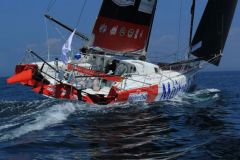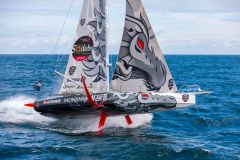With the appearance of the canting keel, the IMOCA boats have really entered the performance area, with these 4 tonnes going upwind, giving them extra power. But also an important safety element, we remember the images of boats stuck upside down in the middle of the southern seas! From 1996 onwards, this performance tool became confused with the safety of the sailors, being able, at the skipper's request, to tilt his keel to windward, but in the event of capsize, to bring the boat back to its initial position. An important milestone had just been passed!
From 2014 onwards, the rules require standardised parts: the mast, the keel sail and a tilting system. It is the company HYDROEM which is chosen to provide the teams with this kit. We asked Michel FARRÉ, the company's manager, to explain his system to us.

Can you explain the keel tilting system found on board IMOCA boats?
There is a hydraulic cylinder cabinet, a mechanical safety arm, a hydraulic power unit, an expansion tank, a "Capas-Charger" cabinet and the control boxes.
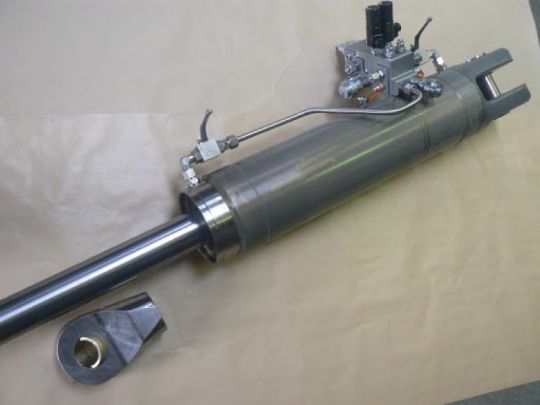
How much weight does it carry?
It is difficult to give you an exact weight, because we are in the world of competition it's about 200 kg of material embarked, according to the specifications of the gauge. The jack is made of stainless steel, with a high safety coefficient. There is also aluminium and titanium, it has to resist to a rather aggressive environment.
Let's talk about the safety arm?
It's a mechanical safety device in case of a problem. It allows to block the keel in central position, this arm is always in position ready to operate. It is a sliding rod, so as not to interfere with the operation of the jack, but thanks to a slot in this rod, the skipper can slide a pin to prevent slipping in case of big problems on his jack. This locking pin is made of titanium, but when the keel is crazy, you will have to aim just to put it in place
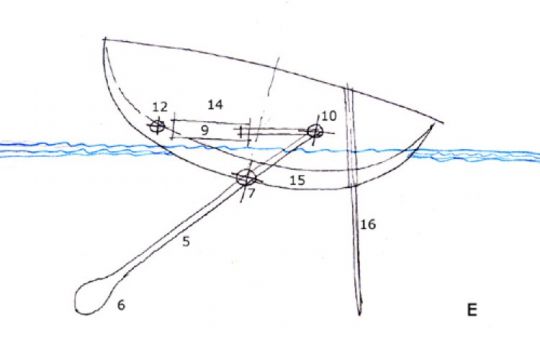
What do you call "Super Capas" in your kit?
It's a capacitor. It adapts to the energy on board, if the skipper recharges his batteries, the Capas does the same, if he wishes. Everything is done to avoid problems of power cuts on board, this Capas allows the use of the tilting system even in the event of a power cut on board, if the skipper has taken care to fill up this capacitor.
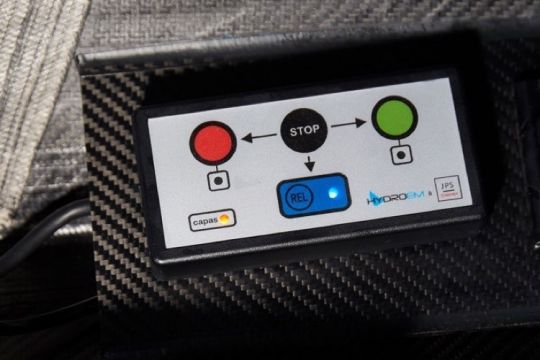
How does a skipper tip his keel?
It operates the control box, where there are 4 buttons: one to switch to starboard, one to switch to port, a Stop button and a Release button. It takes 40 to 60 seconds to make a tack. The skipper can use two techniques: if he has energy, he can press the button he wants, but to save energy, he can press the Release button to let his keel go down by gravity and thus avoid pulling on the energy on board. There is no automation, it is the skipper who acts on the system directly. The tilt helps the keel to go up on the other side.
Do you supply anything else for IMOCA?
We ensure the maintenance and the follow-up of the products and we recommend to the skippers to embark spare parts in order to be able to troubleshoot the system at sea. We also supply jacks for headsails and jacks for the rake of foils allowing the adjustment of the angle of attack. But these jacks are not one-design..
